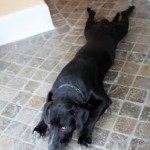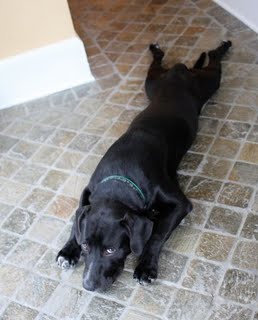
Animal Law is back in the headlines! And the enteral question, at least in New York, is what happens if you have a good dog but a bad owner?
It has been a longstanding (and terrible) practice in New York that suing negligent animal owners for injuries caused by their own negligence was forbidden, and that one could only bring a strict liability action against an owner if the animal had a known vicious propensity (“every dog gets one free bite”).
You had to blame the dogs and owners were immune for their negligence.
I last wrote about this back in 2017:
When last we visited New York’s dog law, it was really good for dog owners, but not so good for those that were injured by their negligence. New York, you see, is an outlier to the vast majority of states. While in most states you can successfully sue the owner for the owner’s negligence, in New York, you have to blame the dog.
Back then, I was writing about Scavetta v. Wechsler, part of our line of “good dog, bad owner” cases. That owner had tied his 35-pound dog to a small unsecured dog rack and went toward a store. The good dog tried to follow. The dog then heard scraping and screeching from the metal rack it was dragging, freaked the hell out, and bolted. The rack clobbered the Good Samaritan trying to help the panicked dog.
It was a dumb rule to give immunity to the owner, a rule that had nevertheless been affirmed by New York’s top court two years earlier in Doerr v. Goldsmith. In Doerr, a dog owner called for his dog, and the dog obeyed, as it ran across the street in Central Park into the path of a bicyclist. The court explained that it was following the law as previously set forth in Bard v. Jahnke (“when harm is caused by a domestic animal, its owner’s liability is determined solely” by the vicious propensity rule).
In the 2017 case, Scavetta, while constrained to follow the prior rule, a unanimous panel of the Appellate Division (First Department) urged the Court of Appeals to reverse:
At the same time, we take this opportunity to acknowledge plaintiffs’ persuasive argument that the Bard rule may be neither prudent law nor prudent policy. As this case illustrates, a plaintiff cannot recover for injuries caused by a dog that has not demonstrated vicious propensities, even when the injuries are proximately caused by the owner’s negligent conduct in controlling or failing to control the dog. This rule immunizes careless supervision of domestic animals by their owners and leaves those harmed in the State of New York without recourse.
And today the Court of Appeals has done just that. Its dogawful precedent was struck down in Flanders v. Goodfellow. In Flanders, the 70-pound dog was inside and slipped past its owner when he went to open the door for a mailman, and attacked him. A nasty bite and multiple surgeries later and we have a landmark ruling.
While acknowledging that stare decisis is an important rule, the Court held that, “Taking full account of these factors, along with the abiding values that stare decisis seeks to promote, “[W]e conclude that the time has come to set aside Bard‘s rule that an owner of a domestic animal may not be held liable in negligence for harms caused by their animal.”
As a public policy matter, giving owners immunity for negligence could not stand up: “Tort law seeks to incentivize us to be mindful of the risk that our behavior might harm others by imposing a duty to act with due care. That is why, under ordinary principles of negligence, a victim may seek recovery by proving that a defendant failed to exercise due care and thereby proximately caused a victim’s injuries.”
By exempting owners of domestic animals from negligence liability, Bard departed from these principles, and the standard incentives of our tort system, in several respects. For one thing, foreclosing negligence liability shifts both the burden of due care and cost of injuries away from owners of domestic animals to parties injured by those animals. And by allowing liability only upon proof that the owner had actual or constructive knowledge of a vicious propensity, the rule gives owners of domestic animals little reason to familiarize themselves with any potential proclivities that might lead the animal to cause harm, and in turn, to take reasonable steps to prevent any harm that may result.
This is a great result, and it was without dissent. There was only one downside to it — our most esteemed high court failed to quote me, but I guess you can’t get everything in this world. From 2013, when I was hoping that the Court would overrule the Bard decision in Doerr:
My prediction: New York’s long-held policy of granting immunity to animal owners for their own negligence (as opposed to the animal’s viciousness) will fall by the wayside as illogical. Immunity for negligence makes no sense at all, and is something that only a legislature can grant.
So the Court didn’t do it in Doerr, but it did it now. Better late than never.


